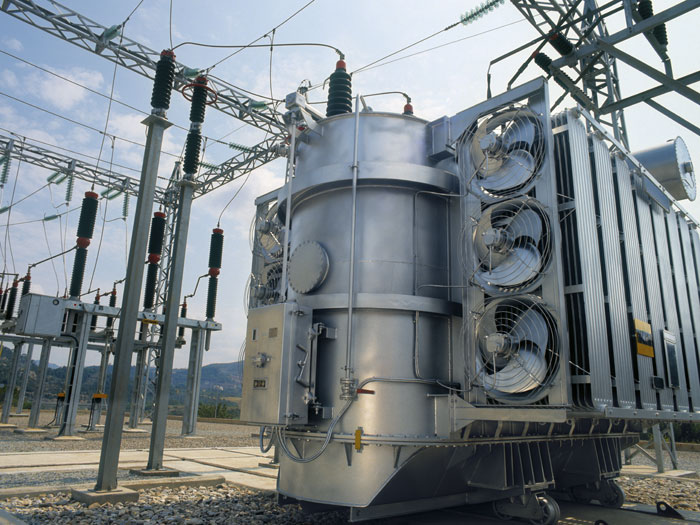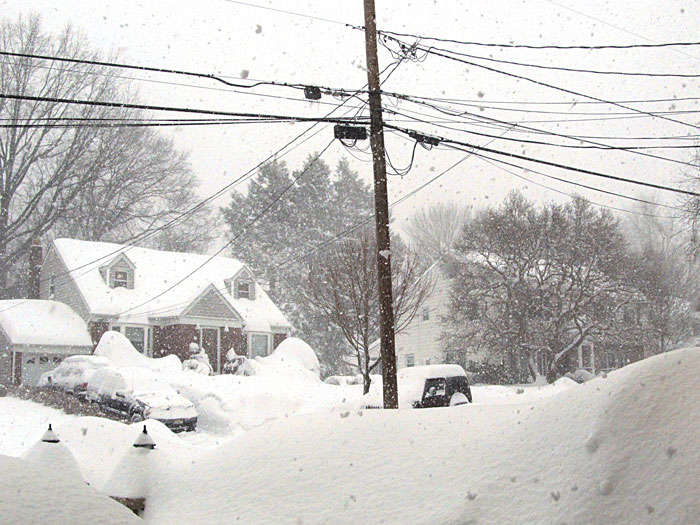Risk Scenario
Fumble
Disclaimer: The events depicted in this scenario are fictitious. Any similarity to any corporation or person, living or dead, is merely coincidental.
Buckets of Money
Maxine DaGuerre, the risk manager for the Middle Atlantic power generation company Corsair Corp. was decidedly uncomfortable.

Along with the rest of the Corsair Corp. management team, she was waiting to hear the latest decision from PJM, the regional electricity wholesale market. Under guidance from federal regulators, PJM was establishing incentives and penalties for power generators willing to guarantee delivery of electricity to the grid at times of crisis or peak demand, otherwise known as Emergency Load Response events.
The Northeast saw a near blackout in the frigid winter of 2014. Demand during several days of intensely cold weather almost knocked off the grid and generators reported a number of problems trying to feed the beast.
The regulators did not want to risk that scenario again.
The incentives were lucrative, game changers, and despite the protests of large buyers of electricity, the incentive plan was moving forward. Now, in mid-August of 2015, Corsair executives were awaiting word from PJM on what the incentives would be for the energy auctions for June 2018 to May 2019. Word was that they were going to be even more than they had been for the corresponding period for 2017-2018.
The questions included what to do with the increased revenues? Plow them into plant upgrades, purchase insurance to cover the cost of any penalties for non-delivery, lock in natural gas delivery for the year to guarantee price and supply?
It was a complicated set of questions. DaGuerre knew which way she was leaning.
The incentives were one thing, but the penalties were staggering. The regulators were ready to fine power generators that failed to deliver electricity on emergency demand at more than $3,000 per megawatt hour in some cases.
For a 1,000 megawatt plant that was a penalty that could run into millions of dollars per hour.
“Where was the backstop against that?” she thought to herself.
DaGuerre’s internal monologue was interrupted by the ringing of her desk phone. It was the company CFO, Eric Petruzzi. He sounded excited.
“Hey Maxine, can you join us upstairs? The announcement from the market is just in for the 2018-2019 incentives and we want to look at our options.”
“Sure thing, I’ll be right up,” DaGuerre told Petruzzi.
The exuberance in Petruzzi’s voice was off-putting.
In DaGuerre’s mind this was not a time for celebration, it was a time for careful consideration.
When she got upstairs there were three men at the table, Petruzzi, the operations chief Ben Ochstein and the CEO, Bill “Red” Miller.
“It’s what we thought Maxine,” Petruzzi began.
“PJM raised the incentive for 2018-2019.” He glanced briefly at the electronic pad in front of him.
“It’s raised the incentive by almost one third,” Petruzzi said with enthusiasm in his eyes. DaGuerre could swear she saw dollar signs there.
From $120 Mw-Day the incentive had been raised to almost $160 Mw-Day for 2018-2019. One 1,000 Mw plant could bring in more than $60 million in annual revenue.
Margaret watched as Ochstein and Miller exchanged glances. It seemed like some key decisions had already been made.
“We know how you feel about the penalties, Maxine,” Miller said.
“But you also know the importance of risk mitigation,” Ochstein said.
“We’re thinking we’ve got a real good opportunity here to upgrade some of the facilities, particularly Peachtree and Susquehanna,” Ochstein said.
DaGuerre cleared her throat and tried to steady herself.
“I’m all for risk mitigation, as you know. And I think we should upgrade some of the plants, particularly Susquehanna,” she said, giving Ben Ochstein a look that she hoped communicated solidarity with his idea.
“But I can’t help thinking that some risk transfer is in order here,” she said.
Petruzzi started to say something but DaGuerre felt compelled to just plow ahead.
“One, this is the first time we’ve been in this situation. The incentives are compelling, but the penalties are severe if we have a breakdown. Four of our plants are coal-fired and let’s face it, could really use some upgrades. It’s not just Peachtree and Susquehanna,” she said, giving Ochstein a meaningful look.
“I’m not asking for a lot but I think 5 percent of the three years’ auction revenue should be invested in some sort of risk transfer,” she said.
“That’s too much Maxine,” Miller said. From his tone, DaGuerre knew she’d be lucky to get a fraction of that.
The meeting ended with DaGuerre making her own odds that the company would be investing 2 percent of any emergency load auction funds into risk transfer mechanisms.
She flat-out doubted that was enough.
More Misgivings
While she did her best to partner with Ben Ochstein and the company’s engineering team to make the best use of the company’s capital in plant upgrades, Maxine DaGuerre couldn’t stop doing the numbers in her head.

For power generators that had agreed to supply electricity to the grid during Emergency Load Response events, the penalties from PJM and the regulators could be staggering. They were looking at $3,000 per megawatt hour. For a 1,000 MW plant, that was $3 million per hour.
The variables were driving DaGuerre crazy. She’d only been able to purchase $15 million in coverage for any fines Corsair might face. That might seem like a lot of coverage but she’d have been much happier with five times that.
She studied the preventative maintenance plans and upgrades for Corsair’s 18 power generation plants until her eyes hurt. Ben Ochstein and the company’s engineering team weren’t slouches. They were top-notch professionals. But nobody was perfect.
As fall moved to winter, the upgrades at the Corsair plants, at Susquehanna, Peachtree and others carried on apace. Ochstein and Petruzzi were also congratulating themselves that they had locked in reasonably priced natural gas supplies for the company’s plants that relied on natural gas to produce electricity.
DaGuerre struggled to share their enthusiasm.
DaGuerre hated to be a stick-in-the-mud. She wanted the company to thrive. She certainly wasn’t hoping for a blackout in the Northeast or anything like it.
Then the cold came, just like it did in the winter of 2014, only this time much earlier. Three days of intense cold in the week between Christmas and New Year’s provoked the region’s first Emergency Load Response event, on Dec. 28.
Corsair didn’t miss a beat, while the word got out that one of its competitors had failed to deliver for three hours due to a natural gas pipeline problem near Philadelphia and been fined.
2016 broke with reasonable temperatures, but a polar vortex gripped the Northeast in the second week of January. This time Corsair wasn’t so lucky. Boiler problems at the coal-fired Susquehanna plant caused the 1,200 megawatt plant to go offline for five hours during an Emergency Load Response event. The fine was $15 million.
The formerly sanguine Eric Petruzzi went into full panic mode.
“Can you get us more coverage?” he asked DaGuerre during a late-night phone call on Dec. 29.
DaGuerre could hear laughter and clinking glasses in the background.
“Where are you?” she asked him.
“I’m … at a party. At my mother’s place in Annapolis,” he said somewhat sheepishly.
“I’ll … see what I can do,” DaGuerre said.
She didn’t bother calling her United Kingdom-based broker until very early the following morning.
An Endless Slog
Sorry, the carriers said.
“Not at this point,” DaGuerre’s broker Martin Rule told her the following morning.

“Your best bet for the remainder of the winter is to go full bore on plant inspections and preventative maintenance and hope you can ride it out,” he told her.
“Ride it out.” Those were words that Maxine DaGuerre hated. That wasn’t risk management, it was like playing roulette.
Sleep-deprived from meetings with Corsair Corp. engineers and operations personnel throughout the Atlantic seaboard through January, DaGuerre was trying to catch a nap in a drafty hotel in Wilmington, Del., on Feb. 10 when her phone buzzed.
It was Ochstein. He was a humbled man.
“We were out six hours at Leedsville from 6 a.m. to about an hour ago,” he told her. It almost sounded like his voice was cracking. He sounded exhausted.
An $18 million fine. No cover. Not for this.
“Another boiler problem?” DaGuerre asked him.
“Boiler-related.”
As Ochstein droned on, dispirited, with the technical details, DaGuerre started tuning him out.
She rolled over and stared at the framed print in her room as Ochstein’s words seeped in. She didn’t even feel sick, she felt numb.
She knew what Miller and Petruzzi would tell her and maybe they were right. Corsair had the resources to keep its plants up-to-speed and perhaps even profit greatly from the incentives it could earn from this Emergency Load Response arrangement with PJM.
But she knew one thing for sure.
She never again wanted to feel what she felt that early afternoon in that drafty hotel room in Wilmington.
These multimillion dollar hits had to stop. They couldn’t afford to fumble again.
Risk & Insurance® partnered with Swiss Re Corporate Solutions to produce this scenario. Below are Swiss Re Corporate Solutions’ recommendations on how to prevent the losses presented in the scenario. This perspective is not an editorial opinion of Risk & Insurance®.
The cold snap during the Polar Vortex of January 2014 brought the northeast United States dangerously close to blackout conditions. As temperatures plunged, many of the region’s key power plants performed poorly, and the region came dangerously close to rotating blackouts and a loss of electric heat. Had the power gone out, a large segment of the population would have been exposed to the severe cold with dire consequences.
Recently, the PJM Interconnection, which manages the electric grid for 13 states (plus Washington DC) and nearly 61 million people, implemented a new electric generator incentive scheme that aims to prevent a repeat of the poor generator performance during January 2014. The new program, called PJM Capacity Performance, will provide increased revenue for power generation companies that participated in capacity auctions. However, while generation companies will receive additional revenues for offering firm capacity, there is also considerable risk for non-performance. An unplanned outage or derate at a power plant during an emergency event could have significant financial costs (a million dollars an hour or more, depending on plant size).
Swiss Re Corporate Solutions understands the risks facing your business. Our electricity price and power plant outage solutions are designed to help you take advantage of the new capacity incentives, and offer protection for unseen mechanical issues impacting power generation.
Power producers can manage that risk through Swiss Re Corporate Solutions’ Electricity Price & Outage (ELPRO) and Capacity Performance coverages, which compensates generators for output lost from unplanned outages based on market conditions at the time of loss. We also offer weather and commodity price risk solutions to help you manage risk. To learn more, visit http://www.swissre.com/corporate_solutions/solutions/weather/











